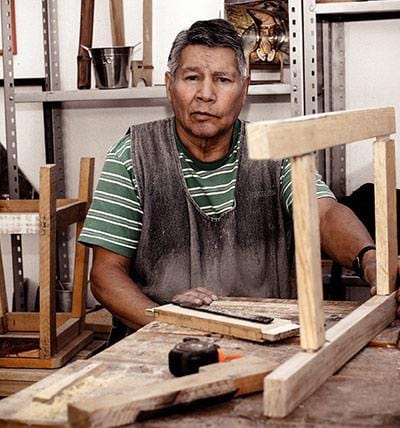The 1000-piece handmade wood puzzle is not as difficult as it seems, but it can be if you don't have the right tips.
A Jigsaw Puzzle Can Be Time-Consuming, But It is Worth It
If you're looking for a challenge, try a 1,000-piece puzzle.
They can be time-consuming, but they're worth it.
The satisfaction you'll feel when you finally complete it is incomparable.
So, Why is a 1000-Piece Puzzle So Difficult?
A 1000-piece puzzle can be quite difficult, especially if you are new to puzzles or don't have a lot of experience.
There are a few reasons why a 1000-piece puzzle can be difficult.
First, there are a lot of pieces to put together.
This can be overwhelming and make it hard to know where to start.
Second, the pieces are usually small, which can make it difficult to see what goes where.
Finally, 1000-piece puzzles usually have a lot of detail, which can be challenging to recreate.
If you are struggling with a 1000-piece puzzle, don't worry! There are a few things you can do to make it easier.
Time Required
A 1000-piece puzzle can take anywhere from a few hours to a few days to complete, depending on the person's level of puzzle experience and the difficulty of the puzzle. For those who have never attempted a puzzle of this size, it is important to be aware of the time commitment required before starting. Otherwise, you may find yourself feeling frustrated or even overwhelmed. If you do decide to take on a 1000-piece puzzle, be sure to set aside plenty of time to work on it and enjoy the process!

How Can You Make 1000 Piece Solving Easier?
Here are some tips to make them easier. Work on one section at a time. Don't try to do the whole puzzle at once. Find the edges first. This will help you to see what pieces go where. Work from the top down. This will help you to avoid moving pieces around too much. Take your time. Don't try to rush through the puzzle. I hope these tips help you to see that 1000-piece puzzles aren't as difficult as they seem. Just take your time and work on one section first.
What are the Most Difficult 1000 Piece Puzzles to Solve?
One of the most difficult 1000-piece puzzles is called the "Windmill." It is made up of intricate interlocking pieces that are very difficult to put together. Another difficult 1000-piece puzzle is the "Sailboat." This puzzle has a lot of small pieces that are all the same color, making it very hard to distinguish where one piece goes.
What is the Average Time It Takes to Complete a 1000 Piece Puzzle?
A 1,000-piece puzzle can be a daunting task, but it can also be a fun and rewarding experience. The average time it takes to complete a 1,000-piece puzzle is between 10 and 20 hours. While this may seem like a long time, it is actually a relatively short amount of time when you consider that a 1,000-piece puzzle has 1,000 pieces.
Benefits
Completing a 1000-piece puzzle can have a number of benefits, both psychological and physical. If you're looking for a challenge, this is it. This is creative evening activity for families.
The Physical Benefits Of Completing A 1000 Piece Jigsaw Puzzles
If you're looking for a challenge, try a 1000-piece puzzle. It's not easy, but it's definitely rewarding. Not only is it a great way to test your patience and problem-solving skills, but you also get the satisfaction of completing a difficult task. And don't forget, the physical benefits of completing a puzzle are great too. Puzzles are an awesome way to improve your fine motor skills and eye-hand coordination. So next time you're looking for a new challenge, try a 1000-piece puzzle.
Pieces Can Relieve Stress
A 1000-piece puzzle can be quite difficult, but it can also be a great way to relieve stress. It can be frustrating trying to find the right piece, but the sense of accomplishment when you finally complete the puzzle is unbeatable. If you're feeling stressed, try working on a puzzle. It might just be the thing you need to relax.
How Can It Improve Your Manual Dexterity?
This type of puzzle can improve your manual dexterity, problem-solving skills, and patience. Assembly puzzles require a great deal of attention to detail. Each piece must be evaluated and placed in a specific location. This can be difficult, especially when some pieces are very similar.
How Can It Improve Your Hand-Eye Coordination?
If you're looking for a challenge that will help improve your hand-eye coordination, try completing a 1000-piece puzzle. It's not as easy as it may seem! You'll need to be patient and have a lot of attention to detail to complete a 1000-piece puzzle. It's a great way to improve your problem-solving skills and test your patience.

Final Thoughts
While a 1000 piece puzzle may seem daunting at first, it is definitely possible to complete with some patience and perseverance.
There are a few methods you can use to make the process easier, such as working on smaller sections at a time or finding a puzzle buddy to help you out.
With a little bit of effort, you'll be able to put together an impressive puzzle that you can be proud of.
Commonly Asked Questions
How can I solve a 1000 piece puzzle in 1 hour?
Some people may use a method of starting with the border pieces and then working their way in, while others may prefer to start with the corner pieces and build outwards. There are a variety of other methods that can be used as well, and it really depends on the individual's preferences and puzzle-solving skills as to which technique will be the most successful.
Is putting jigsaw puzzles that have 1000 pieces hard for kids?
Depending on the child's age, puzzle difficulty can vary. A younger child may find a 1000 piece puzzle to be challenging, while an older child may find it easier.
Are there large piece jigsaw puzzles?
Yes, there are large-piece jigsaw puzzles. Some large-piece jigsaw puzzles have pieces that are as big as 20 inches.
What are the most difficult puzzles in the world?
Some popular puzzles that are considered difficult include the Rubik's Cube, Sudoku, and the Tower of Hanoi. There are also many difficult logic puzzles and brain teasers.
ABOUT THE AUTHOR
Olivia Poglianich
Content Strategist
Olivia Poglianich is a nomadic brand strategist and copywriter in the wooden crafts and 3D product design space who has worked with brands such as Visa, Disney and Grey Goose. Her writing has taken her all over the world, from a Serbian music festival to a Malaysian art and culture event. Olivia is a graduate of Cornell University and is often writing or reading about travel, hospitality, the start-up ecosystem or career coaching. Her latest interests are at the intersection of web3 and communal living, both on and offline.






